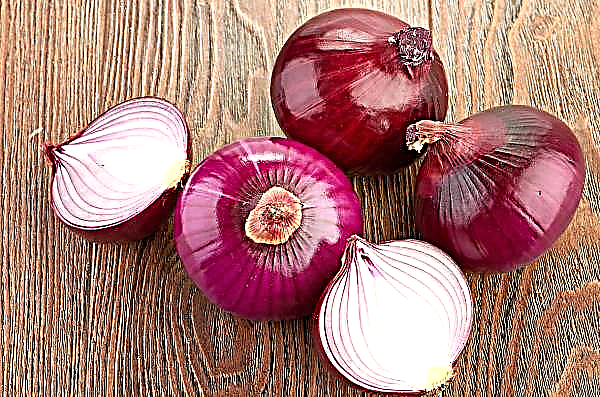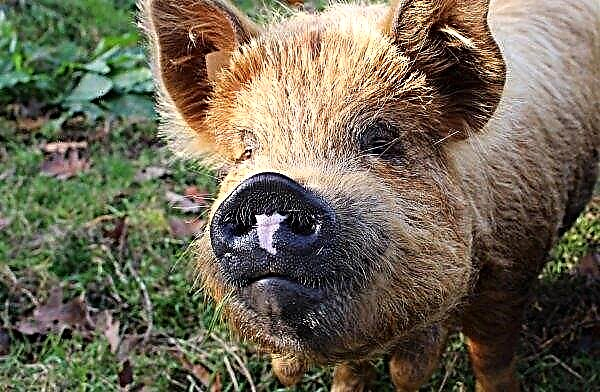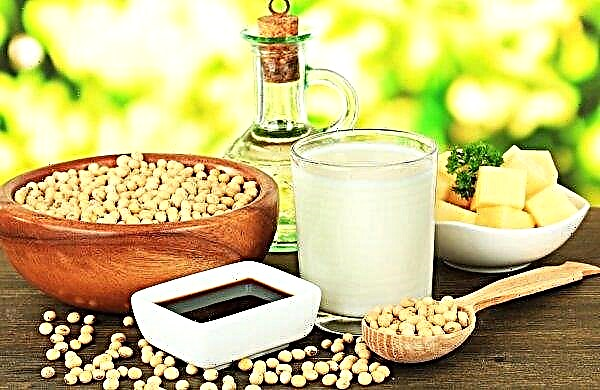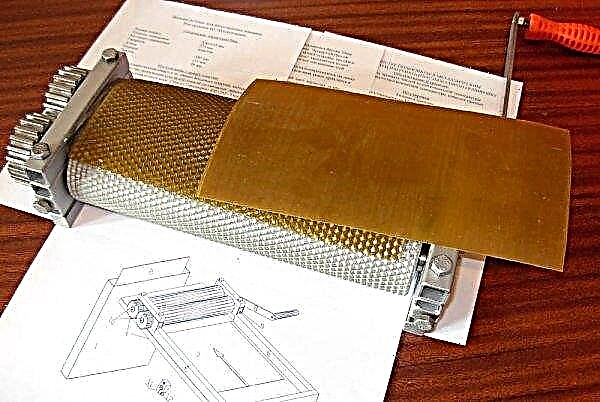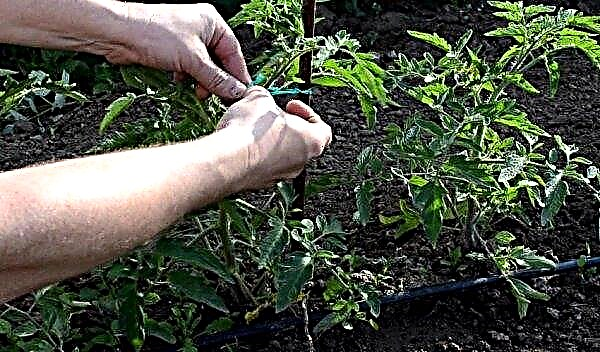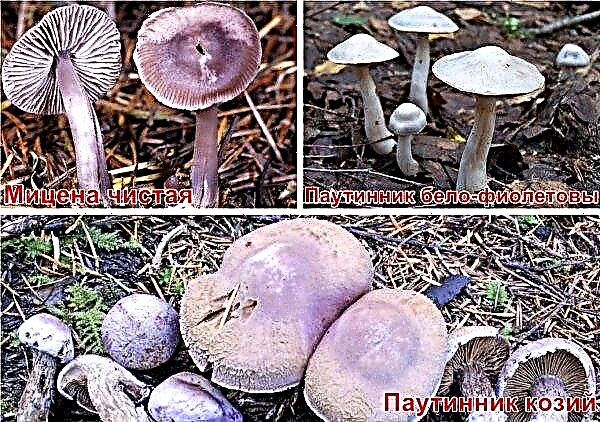Ginger has not only a variety of beneficial properties, but also becomes a fragrant seasoning in various dishes and drinks. If you notice that the ginger root has sprouted, then hurry to plant it. You will find all useful information on growing ginger in this article.
Under what conditions can a rhizome sprout
If you take any ginger rhizome, then on it you can find the "eyes", the beginnings of shoots. From there new shoots make their way, similar to onion arrows. The plant itself is unpretentious to the environment, so even in the refrigerator there is little chance that shoots will appear.

Comfortable conditions for germination will be heat, high humidity and plenty of light. It is important that the root itself is not too old. It is recommended to take rhizomes fresh, elastic, with a solid and silky skin, there should be no areas with mold and dryness. Healthy color is light gold.
Rules for landing at home
Everyone can plant ginger at home. This process does not require special skills. But certain rules must still be observed so that ginger takes root and develops rapidly. Subsequently, this plant can reach a meter in height.
Did you know? Elizabeth I was a big lover of ginger. She has helped spread the popularity of the gingerbread men that children around the world love to this day.
Root tub disinfection
Typically, roots that are sold in stores and markets are treated with special chemicals that provide the product with good transport tolerance and prevent germination. To wash off this layer, the root must be thoroughly rinsed, and it is better to leave it in water for a day.

Also effective disinfectants have proven themselves:
- potassium permanganate;
- "Fitosporin";
- baking soda.
A teaspoon of any of these products should be diluted in a glass of water and treat the root with the resulting solution.
Soil, pot and drainage system installation
If further transplantation into open ground is planned, then it is better to immediately use the land, since ginger grown on moss does not take root well in other soil. As the land, it is better to take mixtures specialized for vegetables. You can also prepare a substrate (1: 1: 1) from garden soil, humus, sand.

The pot you need to choose wide and low. This is necessary, because the roots of ginger do not grow in depth, but along. You can use compact pots, if you want to grow ginger as an ornamental home plant, then it will direct all efforts to the development of ground parts, not rhizomes.
 Be sure to have drainage holes on the bottom of the pot. The drainage itself is poured primarily on the bottom of the pot.
Be sure to have drainage holes on the bottom of the pot. The drainage itself is poured primarily on the bottom of the pot.
Drainage is necessary because ginger does not like stagnation of water and waterlogging, this can cause root decay. Expanded clay or crushed polystyrene can be used as material for drainage.
Rhizome planting
Planting ginger rhizomes with kidneys includes the following steps:
- Soil preparation. Drainage is poured into the pot, then the soil in the volume of 2/3 of the pot. It does not need to be rammed. Everything must be moistened, but not poured. It is easiest to use a spray gun.
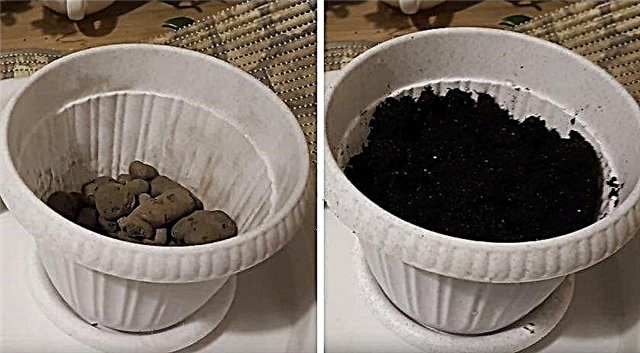
- Landing. The root is laid on the surface of the soil. It is important that the kidneys "look" up. It is better not to plant the root close to the walls.

- Backfill. A small layer of soil is filled up from above (no more than 5 cm). And you can moisturize again.
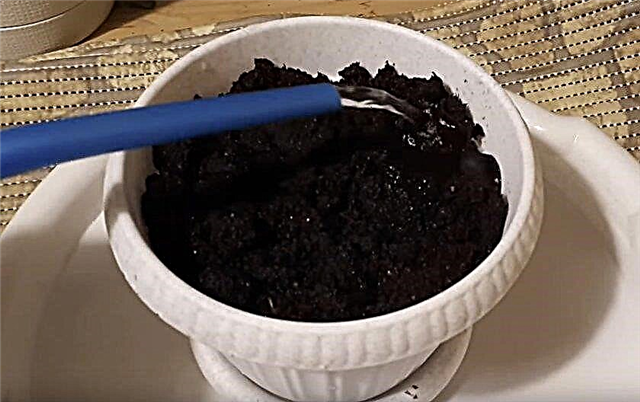
Sprout
The first sprouts can usually be seen after a month. But the period of emergence can vary from two weeks to several months.
Features of cultivation, care
For good growth, ginger, like any culture, needs proper and regular care. Below you will find all the tips for caring for this plant.
Lighting and temperature
Ginger is a tropical culture, so it will be natural for him to have a lot of light, but not scorching sunlight. Ultraviolet light can cause burns on the leaves of the plant. Therefore, for ginger the best place would be the western or eastern windowsill in the room.

If, nevertheless, the pot stands on the south window, then it is recommended to hang a tulle curtain or gauze. He will feel good also on the balcony, but only in the warm months.
The temperature is needed moderate. Best suited is +25 ... + 30 ° C. In winter, +18 ... + 20 ° C is enough. If the temperature suddenly drops below + 15 ° C, then the plant will hibernate. In this state, ginger should be stopped watering and kept at a temperature not lower than + 12 ° C.
Important! A sharp temperature drop can completely destroy ginger.
Air humidity
Rainforest was native to ginger, so you need to achieve high humidity in the air so that it feels comfortable. This is especially necessary in the cold seasons when the heaters are working, they have the ability to "dry" the air. In this case, regular spraying of the plant is needed. You can do this every day, except for the period when the leaves of the plant begin to turn yellow.
Watering, top dressing, cultivation
Ginger requires always moist soil, but does not tolerate moisture stagnation, because the roots may begin to rot due to this. Therefore, the amount of incoming water must be kept under control. Dry soil should also not remain, especially in the early stages of planting rhizomes.

Wrinkled or fallen leaves may indicate insufficient watering. Yellow leaves may indicate, on the contrary, about waterlogging. Light loosening can be carried out after each watering. It is strongly impossible to stir up the soil, that is, the root system of the plant is shallow. A depth of 1 cm will be optimal.
The first top dressing can begin when the sprouts appear. The gap between them should be about 12 days.
For fertilizing, you can take such fertilizers as:
- mullein solution with water (1:10);
- mineral complexes;
- organic mixtures.
For the cultivation of an environmentally friendly product, only organic mixtures should be used. Feeding can be carried out in all seasons, except winter and late autumn.
Pruning
For many who planted ginger, the question arises - do I need to prune the branches. It all depends on the purpose for which it is grown.. If the goal is to dig up rhizomes for cooking or for medical purposes, it is better to cut the branches. Then the plant will use its strength to increase the mass of the roots, and not the ground parts. If ginger grows for beauty, then trimming is not necessary.

Harvesting
Yellowed leaves and decaying sprouts will serve as a signal for collection. This happens in September or October. In Thailand, ginger is harvested all winter. In the middle belt, you have to dig out ginger earlier, that is, because of the cold, it stops growing. The entire ripening process usually takes 9 months. Gradually, watering should be reduced to a complete absence. Then the roots are dug up and cleared of the earth.
The next stage is drying. It can be carried out both in the open sun and indoors. Dried Ginger is ready to eat. You can get roots earlier if you wish. Even after 5 months. They will be identical in taste, but such roots will be much smaller in volume.

How to grow ginger at home on a windowsill for flowering
Many plant ginger not for its rhizome, but for foliage and flowers. They are quite large and come in different shades - yellow, pink, purple and white. If you planted it for decorative purposes, then you do not need to dig up the rhizome after 9 months. Yellowed leaves and shoots need to be cut. The plant next spring will give new sprouts again and then bloom again. Flowering begins in the spring and usually lasts all summer.
Important! Only adult ginger plants bloom from 3 years old.
Pot for stimulating ground shoots
Stimulation of terrestrial shoots is necessary for decorative ginger so that it more likely develops foliage and flowers. The pot in this case will be different from what is taken for growing and obtaining rhizomes. A narrow and deep flowerpot is needed. It will prevent excessive root development, which will cause the plant to devote all its forces to the development of ground parts.

What conditions to create during hibernation
In the fall, the ground parts of the plant signal that the crop is ready for harvest. The stems scatter to the sides, turn yellow, and the leaves fall off. The hibernation period begins.
During this period, you need to change the care of ginger so that it regains strength over the winter and grows sprouts again next spring:
- Watering. When a plant hibernates, it does not feel the need for watering. They can be reduced to a minimum, however, the earth should not dry out completely, it is enough to moisten it slightly.
- Shine. This is also the case with top dressing and sunlight. Fertilizers should not be applied during this period. You can move the pot to a moderately lit room, where the temperature does not fall below + 12 ° C and does not exceed + 50 ° C.
Video: Ginger for flowering
Transplanting and growing in the garden
Despite the fact that the conditions of rainy and hot tropics will be natural for ginger, it is successfully cultivated in some regions of Russia and Ukraine. Creating favorable conditions for this heat-loving root can be expensive and time-consuming, but the tips below will help any gardener to cope with this.
Open ground
For planting in open ground, it is better to take a non-germinated rhizome. If you soak it a day before planting in warm water or potassium permanganate, this will facilitate the hatching of new sprouts.

Next, you need to choose a place for future beds.
Several conditions must be met:
- the site should be protected from drafts;
- it should not be hollows and lowlands in the landscape, otherwise the water will stagnate after the rains, and this in turn will lead to rotting of the roots;
- the site should be sufficiently lit, and at the same time protected from direct scorching rays;
- need fertile light soil with a neutral level of acidity (pH 5–7). Before planting, you can dig the earth with the addition of mineral fertilizers.
The landing process itself looks like this:
- In the prepared soil, small holes are dug up to 20 cm deep.
- They are filled with a layer of drainage in the form of small stones or other materials.
- Fertile soil is then filled up.
- The rhizome is laid buds up at such a depth that there is about 2 cm of soil above it.

The best time to start planting in the soil is late spring. With proper care, the sprouts appear within half a month. At an early stage, the plant develops rapidly, so it requires frequent watering, the earth should never remain dry. You can think about installing an automatic irrigation system. Top dressing is carried out once every two weeks. Weed removal is carried out as they germinate.
Frequent loosening is not necessary; soil can be periodically tilled, but only on the surface. In warm regions, the entire ripening process will take from 6 months. In the middle lane the term is usually 9 months or more. For already sprouted rhizomes, open ground conditions will not be suitable. It needs to be transplanted into the greenhouse.
Important! The shelf life of ginger rhizomes is 2–4 months. If finely chopped and dried, the shelf life can be extended.
Greenhouse
In Russia and Ukraine, ginger is practically not grown in open ground. On the one hand, this is so because this plant has not yet gained wide distribution here, on the other hand, because weather conditions are often too harsh for a thermophilic plant.
Therefore, the presence of a greenhouse will be an excellent outlet for the gardener, who decided to take up the cultivation of ginger. It is now consistently in demand in the market and a regular volume crop can pay off with an excess. The greenhouse can recreate the natural environment for a tropical plant. Leaving in a greenhouse will not be different from caring for ginger in open ground.
The greenhouse can recreate the natural environment for a tropical plant. Leaving in a greenhouse will not be different from caring for ginger in open ground.
- Important points:
- when ventilating the greenhouse, drafts should not occur, therefore it is better to use windows, it is not recommended to ventilate through the door;
- if the region is not warm enough, then artificial heating for the greenhouse will be a good solution;
- planting is carried out in April, and in the autumn the plants are dug up and the rhizomes are sent for drying and storage.
How to protect ginger from diseases and pests
Ginger is highly resistant to common diseases and pests. The pungent odor repels most pests. However, it is most often affected by an insect - a spider mite. Dry weather provokes its appearance. This pest clings to the leaves of the plant and sucks the juice from them. A clear sign of damage will be pale and weak leaves, yellow growing dots. The tick leaves behind the threads, so it is easy to detect them if you spray the stems from the spray gun.
Did you know? Experts say that ginger in the south of Ukraine so far has neither pests nor diseases.
The most effective way to deal with this pest is to use chemicals. Spraying is carried out once a week. It is noted that sticks sticking into the ground from a spider mite will not help. Timely detection of the pest will help save the plant, but if there are too many of them, the whole culture may die.

If plants are grown for further consumption of its rhizomes for food, then you can do without chemicals using, for example, a soap-alkaline solution. Disease prevention will be to maintain a sufficient distance between plants during planting, as well as frequent loosening and disinfection of the soil.
Now if you find ginger root sprouted, you will know exactly what to do with it, and also if you want to purposefully grow this plant in a garden, in a greenhouse or on your windowsill. The fruits of this plant will delight you with spicy tea or you can admire its lush flowers.




